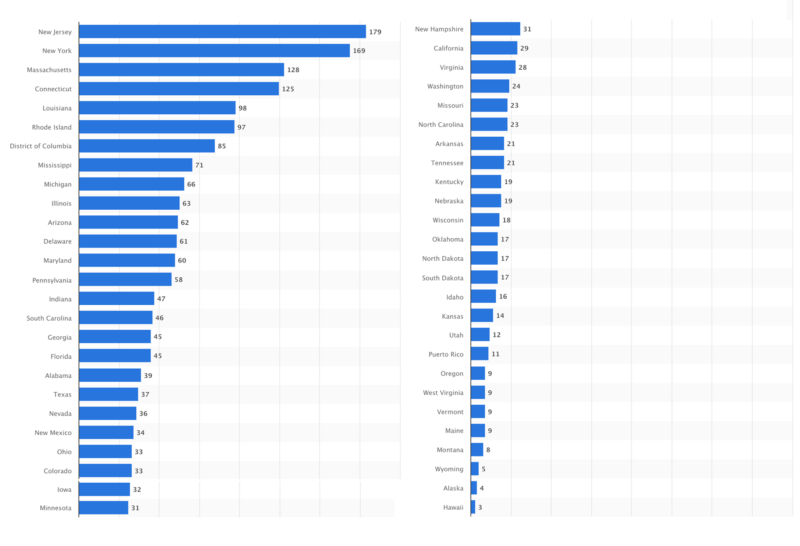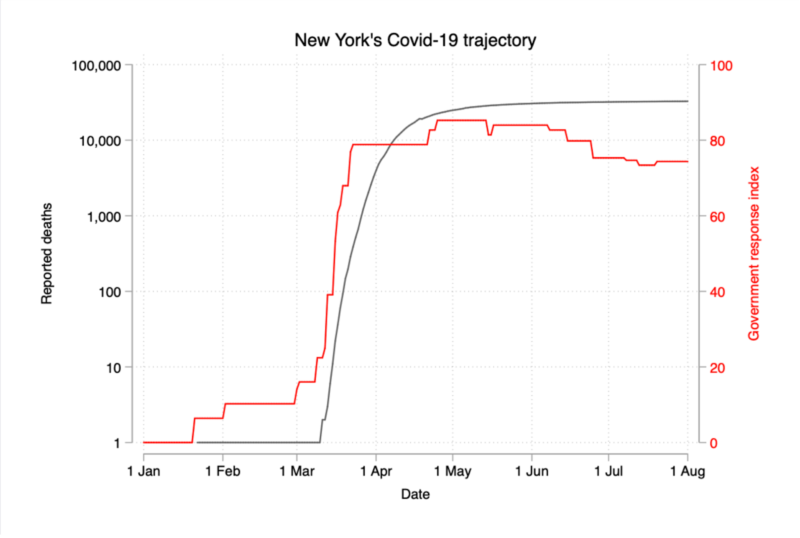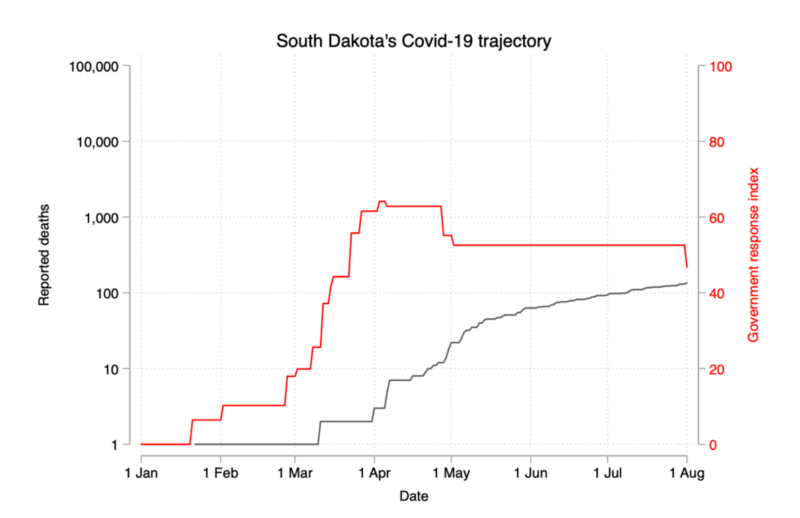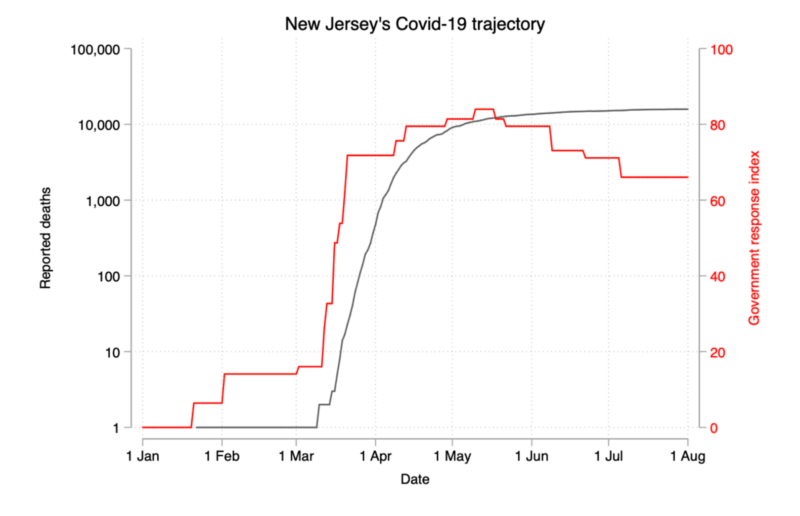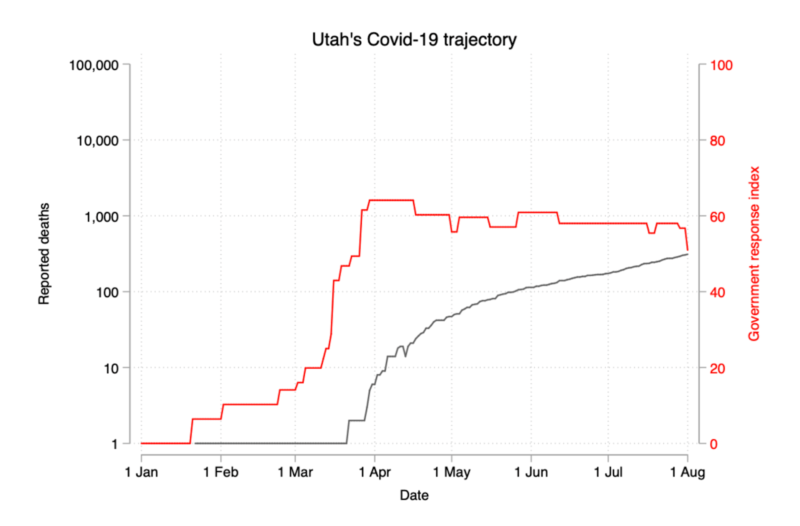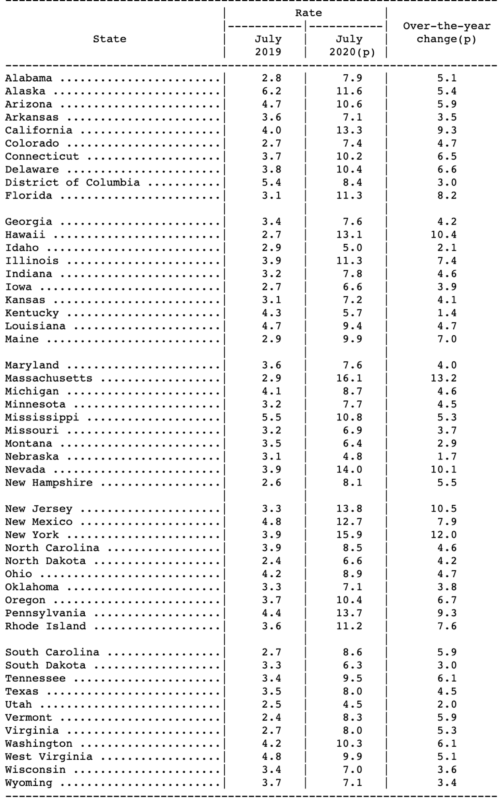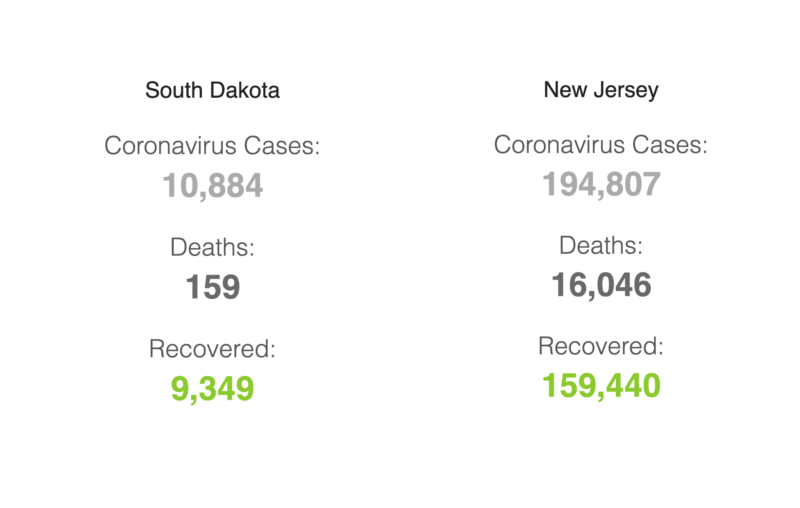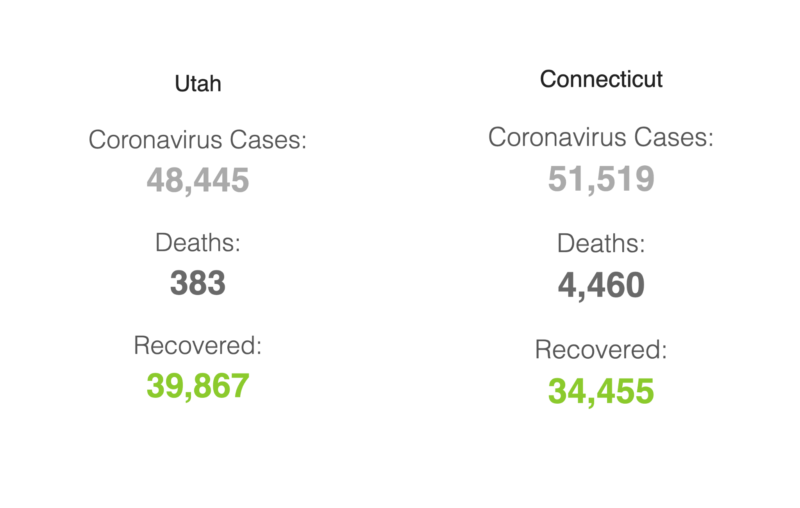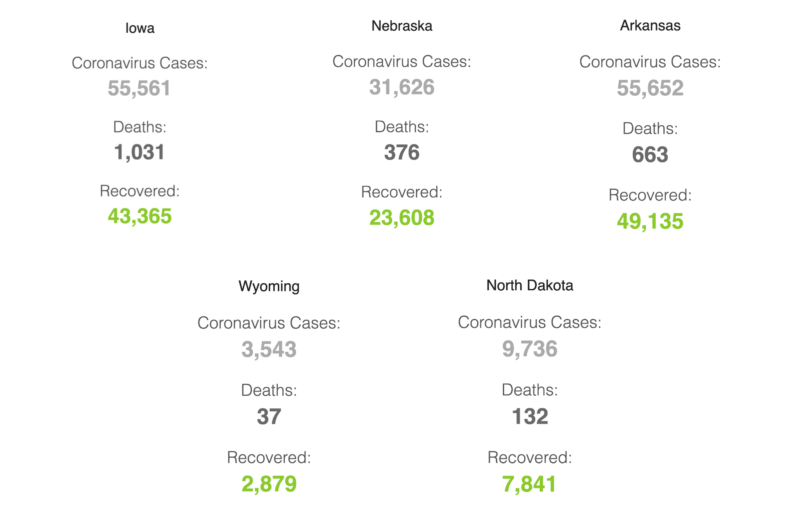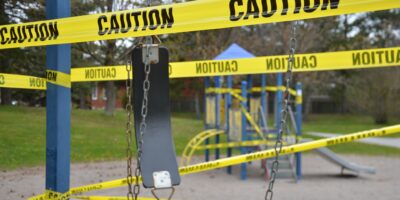A Closer Look at the States that Stayed Open
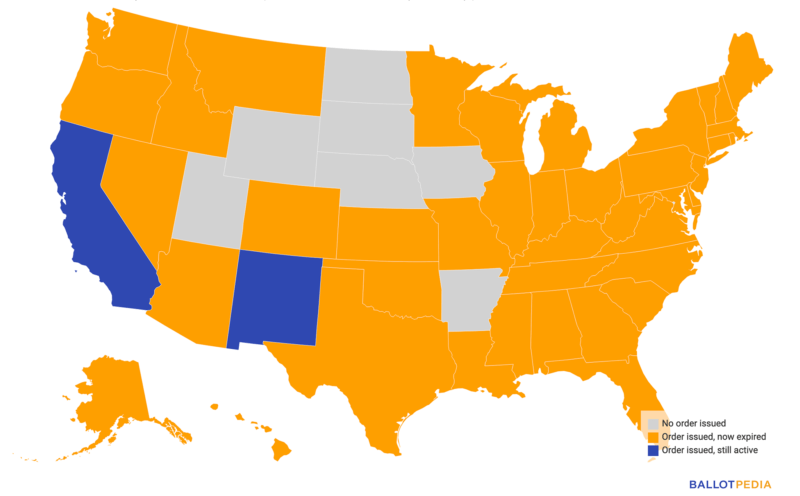
I’m sure we all remember that fateful month of March. One after another states began to issue lockdown orders, closing businesses, restricting travel, and ordering people to stay home. That was the month when the United States went from viewing COVID-19 as a minimal threat to issuing some of the most draconian lockdown measures in the entire world.
Life changed almost immediately. The stock market plummets, the unemployment rate skyrockets, the masks get tighter, the social fabric frays. The government goes on an unprecedented power grab exerting more control over society more viciously and more arbitrarily than ever before.
That’s what many Americans may recall when we think back to late March and early April. What many of us probably don’t recall is what Dr. Anthony Fauci recommended around that same time. During the first week of April, Dr. Fauci made it clear that he believed that every state should issue a stay at home order.
The Hill reported on April 2nd that in an interview with CNN’s Anderson Cooper regarding stay at home orders he stated
“I don’t understand why that’s not happening. If you look at what’s going on in this country, I just don’t understand why we’re not doing that. We really should be.”
This sentiment was stated a bit more clearly when
“Surgeon General Jerome Adams said Wednesday that the White House coronavirus guidelines should be interpreted as a national stay-at-home order.”
Dr. Fauci and those aligned with him endorsed the use of stay at home orders in all 50 states. Such policies generally aim to
“Restrict people from leaving their homes for anything other than essential activities. They’re intended to limit people’s contact with each other in order to slow the spread of the disease.”
According to Dr. Fauci all states should have issued a stay at home order. Today there are seven states that have yet to enact such a policy.
Counterfactuals to Dr. Fauci’s Stay At Home Order
To assess Fauci’s claims that stay at home orders, in particular, are a model policy that every state should have adopted, we can look to Utah, South Dakota, North Dakota, Nebraska, Iowa, Wyoming, and Arkansas. These are the only seven states to never issue stay at home orders and the results are telling, but not necessarily in Dr. Fauci’s favor.
Here is an excellent and comprehensive source on US restrictions and the timeline.
Death rates from coronavirus (COVID-19) in the United States as of August 19, 2020, by state (per 100,000 people) Source: Statista
One of the first things that jump out is that all seven of these states are amongst the top performers in terms of minimizing deaths per capita. In fact, the most draconian states such as New York, New Jersey, Massachusetts, and Michigan, where the governor even banned the selling of seeds, are the worst performing states. Whereas states like Wyoming, Utah, South Dakota, and North Dakota, which did not lock down are amongst the best overall in terms of deaths per capita.
Source: Oxford Covid-19 Response Tracker
Although these graphs are an imperfect and imprecise representation of the specific circumstances and policies enacted in each state, it is still clear that harsh or forceful government action seems to have no correlation with containing COVID-19 deaths. In many cases, highly disruptive and overly involved governments can worsen the pandemic. For example, in states like New York, over 4,500 COVID-19 patients were forced into nursing homes in an ill-planned attempt to alleviate hospital capacity.
Such a policy was implemented in other pro-lockdown states such as California and Michigan, killing thousands of nursing home residents. Closing down the economy and confining residents to their homes is also incredibly detrimental to mental health leading to increased rates of domestic violence and suicide.
Alongside having a poor correlation with any sort of desirable health outcomes, states that avoided stay at home orders also fared far better economically than those that embraced them. Provided below are unemployment numbers from July 2019 and July 2020 from the Bureau of Labor Statistics. Despite COVID-19’s role in the decline of the fossil fuel industry which is a key component in states like North Dakota and Wyoming that didn’t issue stay at home orders, they still managed to maintain better employment rates than many states that did lock down.
The rest of the states that didn’t issue stay at home orders (Utah, South Dakota, Nebraska, Iowa, and Arkansas) fared just as well if not better than other states. In particular, Utah and Nebraska did extraordinarily well maintaining a 4.5% and 4.8% unemployment rate, respectively while keeping death rates low.
In contrast, pro-lockdown states like New York, California, and Massachusetts saw catastrophic unemployment numbers, 15.9%, 13.3%, and 16.1% respectively, alongside high COVID-19 death rates.
Perhaps the most disheartening cases are states like Maine, which issued stay at home orders and overall maintained a high amount of government involvement. The state saw very little cases and deaths much like its neighbors Vermont and New Hampshire.
All three of these states maintained relatively strict lockdowns even as cases as well as deaths remained low. Instead of being able to live out the pandemic in relative peace, the lockdown policies brought about economic devastation as seen by the 9.9%, 8.3%, 8.1% unemployment rates, respectively. The Maine Policy Institute released a report detailing the unnecessary damage such policies brought on the state in their report.
South Dakota: A Closer Look at an Outbreak That Never Happened
Source: Worldometer
Much like Sweden, South Dakota has maintained a famously lax response to COVID-19, relying more so on the responsibility of its citizens as well as implementing lighthanded policies. Much like Sweden it has also attracted a number of skeptics and doomsday prophets who continue to predict an unprecedented wave of death that never seems to arrive.
One writer from Forbes points out skepticism about South Dakota’s response when she writes
“South Dakota, one of five remaining states yet to issue a statewide stay-at-home order, now has one of the largest coronavirus outbreaks in the United States—with 300-plus cases at the world’s biggest pork processor, Smithfield Foods, raising concern about coronavirus spreading through processed meat and how South Dakota’s meager rural healthcare facilities will fare with the disease.”
While states with stay-at-home orders begin to discuss economic reopening and flattening of the new coronavirus case curve, South Dakota’s Department of Health says, “The climb is just starting,” with a case peak predicted to occur from May to mid-June, according to Brookings Register.”
Despite the outbreak at the meatpacking plants, which much like nursing homes and prisons are hotspots for COVID-19, the state ended up doing incredibly well as we can see today. The Forbes article was written in mid-April and today South Dakota still maintains some of the lowest death rates despite the meatpacking plant cases and its rural healthcare facilities.
AIER Senior Fellow Robert Wright talks about his experience living in South Dakota during the height of the lockdowns back in March and April when he says:
“What was imposed was no restaurant sit down service for like March and April but we all just ordered delivered or pickup. The biggest loss was no more buffets. Signs and screens went up quickly and most people seemed to follow them. There was no sense of panic, even after the news hit about the meatpacking plant fiasco. The governor was very assuring and the state was very transparent about numbers and there was no sign of padding or downplaying.”
Policies such as ensuring proper and transparent information as well as moving forward in a calm and methodical way is part of a proven pandemic response. Inciting fear and confusion by drastically shutting down society is a recipe for panic as well as disaster.
The Case of Utah: A Spike in Cases But Minimal Disruption
Utah is a state that much like South Dakota, did not issue stay at home orders and despite a spike in COVID-19 cases managed to keep its death rate one of the lowest in the nation. Utah also did a stellar job at protecting its economy with an unemployment rate at only 4.5%. Pro-lockdown states like Maine also maintained low case numbers and death rates but suffered from a more than double the unemployment rate at 9.9%. States like Connecticut also employed a harsh lockdown but got slammed with high death rates as well as a catastrophic drop in employment.
Source: Worldometer
Last month Utah was on a list of “Redzone” states that showed a concerning rise in COVID-19 cases. The list was composed of a variety of states from freer states like Utah to lockdown states like California which further discredits the idea that strong-armed policies have any relationship to mitigating COVID-19 cases and death.
However, a striking difference is most apparent when compared to a state like Connecticut, which had a similar number of cases but harsh lockdown policies. The numbers are provided above with both states having around 50,000 cases but very different death rates. Utah, which did not embrace stay at home orders and kept its response relatively light-handed, emerges with a far better death rate and economy by an order of magnitude.
The Utah Governor’s Office said the following,
“Utah has the lowest COVID-19 case fatality rate and has the second-lowest unemployment rate in the nation — dropping from 8.6% in May to 5.1% in June,” the response from the budget office states. “Our goal throughout the entire COVID-19 response has been a balanced approach between protecting lives and livelihoods, and it will continue to be so. A strong economy and a healthy public are inextricably linked. Those hit hardest by the economic fallout of the pandemic are also those hit hardest by this public health crisis.”
Utah shows that spikes in COVID-19 cases are unpredictable. It affects states regardless of their lockdown policies. Stay at home orders seem to have no effect in stopping the virus either. The evidence seems to suggest that the virus is unpredictable in its spread but what states can do is make sure that society emerges as healthy as possible both physically, socially, and economically.
Summing Up Arkansas, Iowa, Nebraska, North Dakota, and Wyoming
Source: Worldometer
The five other states that did not issue stay at home orders also did far better than the rest of the country, especially the states with the harshest lockdowns. Iowa in this case performed the worst but even then its per capita death rate still sits in the middle of overall state death rates between Minnesota and Colorado.
Despite the unanimous request from the Iowa Board of Medicine to issue a stay at home order, Governor Reynolds of Iowa refused to do so and in the end her state outperformed most of the country. Although Reynolds did enact a series of restrictive and potentially unnecessary regulations, she refrained from going as far as to issue a stay at home order because
“Reynolds also estimated about 80 percent of Iowa’s workforce would be considered essential under any mandatory order because of sectors in the state such as food production, manufacturing, finance and insurance.
“That’s some of the issues that you have to deal with when you’re making this decision,” she said.
Reynolds also said the negative effects of such an order would affect mental well-being and she indicated it could increase domestic violence: “We know that this has a significant impact on Iowans.”
Although the governor of Iowa was more than willing to issue a number of highly restrictive policies, she stopped short of a stay at home order as she felt that among all the policies, that would be the most extreme.
North Dakota remained relatively open much like its neighbor South Dakota. Both states did exceptionally well compared to the rest of the country, despite factors such as poorly equipped rural areas as well as the presence of Native American tribes which are viewed to be more vulnerable to pandemics. In particular North Dakota’s government stated in a report that
“The vast majority of North Dakota’s economy remained open through this crisis. Our success hinged on a low-mandate, high-compliance approach, and North Dakotans have done their part.”
The state, much like all those that did not issue stay at home orders, will be emerging comparatively unscathed by either the virus or economic disruption.
The Verdict
An optimal response to COVID-19 would be one that balances public health and the economy. Minimizing death while keeping the economy alive which at the end of the day affects people’s overall well-being. Stay at home orders are the most extreme of all policies, completely blind to the economic as well as social tradeoffs and only focused on a theoretical application of public health. There are seven states to serve as counterfactuals to Dr. Fauci’s suggestion that there should be a nationwide implementation of stay at home orders.
All seven states outperformed the majority of the country in both minimizing death as well as protecting their economies. Some of these states even experienced spikes in cases and still managed the disease far better than states with similar caseloads that issued a stay at home order.
There is no definitive evidence to suggest that stay at home orders are effective at addressing COVID-19. Furthermore, the United States experiment with the policy has yielded results that are not favorable to Dr. Fauci’s suggestion regarding the nationwide implementation of stay at home orders.

